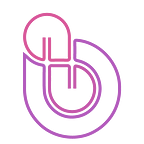Product management 101: Everything you need to know about the job
Originally posted on Veamly
Breaking into product management can be a bit tricky sometimes. Is it about the experience? The background? Interests maybe? Or is the interview the real dealbreaker? But the most important question of them all, what exactly should I expect from the position?
We decided to put together this brief article that has a collection of facts, data, and information to help you get your head around the position.
Product management, the job
You may know it as Product Manager, but some companies like to call it slightly differently:
- Product Marketing Manager
- Product Editor
- Practice Manager
- Market Planner
- Product Planner
- Program Planner
But at the end of the day, all the positions lead to the same thing: building and deploying a product.
Interesting certificates to have: AIPMM, Pragmatic Marketing, Blackbolt.
Some of the most frequent/classic questions candidates get asked during the interview are:
- Tell me about a product you have managed through its life cycle
- How do you know a product is well designed?
- Where do you see yourself in the next 5 years?
Job demographics
Did you know that, in the product management world:
- Only 36% are female and the other 64% is males? With an average yearly salary of $137,125.00.
- Age: Over 60% of PMs are in their 30s-early 40s.
- Background: Marketing (sales and distribution), Engineering (make sure it’s possible and feasible), and Design (make useful and desirable products)
Skills needed in Product Management
Official documents:
- BRD — Business Requirement Document: defines the business needs of the project. Identifies one or more business problems faced by customers that can be solved by the company’s product.
- MRD — Market Requirement Document: Defines the market requirements for a proposed new product or enhancement to an existing product.
- PRD — Product Requirement Document: Defines product requirements for a proposed new product or enhancement to an existing product (e.g. features and functionality).
- FSD — Functional Specifications Document: Defines complete details of a product’s financial requirements with a focus on implementation.
The 6 W questions:
- Who (persona),
- What (problem),
- When (goal),
- Why (User scenario),
- What (requirement),
- How (specifications)
Soft skills: leadership, communication, networking, team management, attention to detail, crisis and conflict management, competitiveness, empowerment, etc.
Main roles
- Reduce support cost
- Increase customer acquisition
- Drive product innovation
This is done by:
- Finding market needs
- Preparing business cases
- Writing requirements
- Monitoring development progress
- Writing and proofing copy
- Training the sales team
- Delivering winning products
- Attending sales calls
- Performing win/loss analysis
